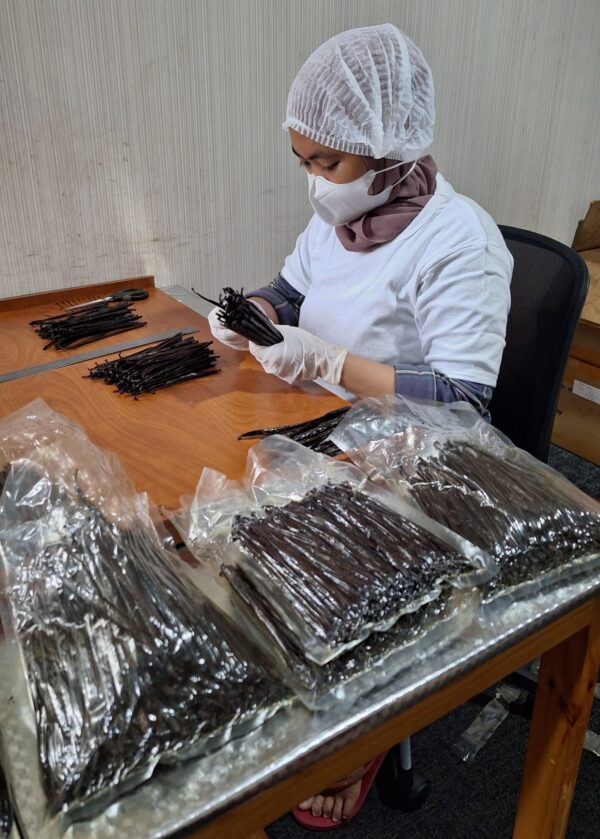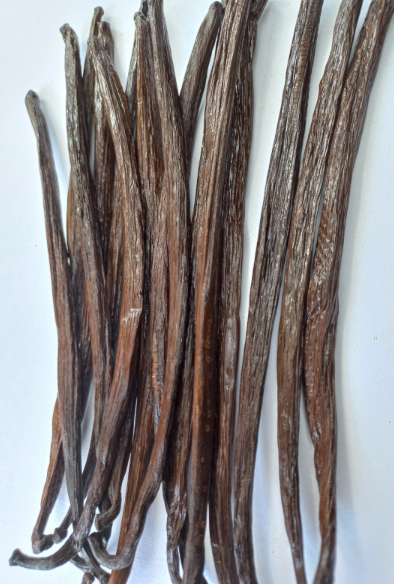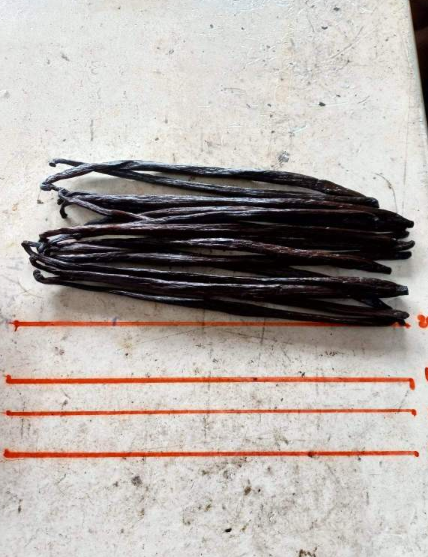About Vanilla Planifolia
Vanilla Planifolia is one of the spices used for several industries, including the food and beverage industry, the perfume industry and even the pharmaceutical industry. The vanilla planifolia species grows at an altitude of 300-700 meters above sea level, it is included in the forest orchid family. At the age of 3-5 years the plants will be ready to bear fruit and every 1 vanilla tree produces 500 grams – 2 kg of vanilla.
Vanilla extract contains important B vitamins such as niacin, pantothenic acid, thiamin and riboflavin and a number of minerals. The polyphenol content found in the vanilla plant is vanillin which produces a strong aroma. Vanilla grows well in areas free of pollution and contains the best organic nutrients. Our vanilla pods are organic and less stress producing the best vanilla pods.
We work with vanilla farmers in Papua, East Java and West Java. Producing vanilla pods which we currently export to the USA, Japan and India. With the results of the analysis of vanillin content 1-2%, moisture 20-35% and lengths ranging from 13-22 cm. Our vanilla pods come in 1 kg food grade packaging and 25 Kg per master carton. Our current capacity 2 tons monthly.

Cultivation of Vanilla planifolia is challenging and requires specific conditions to thrive. Here are some key points about its cultivation:

Climatic Requirements
Vanilla planifolia prefers a tropical climate with warm temperatures and high humidity. It typically grows in regions with temperatures ranging from 20°C to 30°C (68°F to 86°F) and high humidity levels.

Shade-Loving Plant
Vanilla orchids are shade-loving plants and thrive under a canopy of trees or in partial shade. They need protection from direct sunlight, which can be too intense and harmful to the delicate leaves and flowers.

Support Structure
Vanilla planifolia is a climbing orchid that requires support for its growth. In its natural habitat, it uses trees and other vegetation as support to climb. In cultivation, artificial support structures like trellises or poles are used to allow the vines to grow upwards.

Hand Pollination
In regions outside its natural habitat, natural pollinators like specific species of bees and hummingbirds are often absent. As a result, vanilla orchids need to be hand-pollinated to produce vanilla pods (also known as vanilla beans). This delicate process involves transferring pollen from the anther to the stigma within the same flower.

Lengthy Cultivation Process
Vanilla planifolia is known for its lengthy cultivation process. It can take several years for a vanilla vine to mature and produce flowers. After pollination, the pods take several months to develop and ripen. The pods are harvested when fully mature, and then they undergo a curing process to develop the familiar vanilla aroma and flavor.
Regarding its cultivation in Papua Island, specific details about the vanilla cultivation practices and the uniqueness of Papua Island’s environment would require up-to-date, region-specific information from agricultural experts, research papers, or local sources. I recommend reaching out to agriculture departments, research institutes, or farmers’ associations in Papua Island for the most accurate and recent information on vanilla cultivation in that region.
© copyright PT. Kembang Vanila Utama
